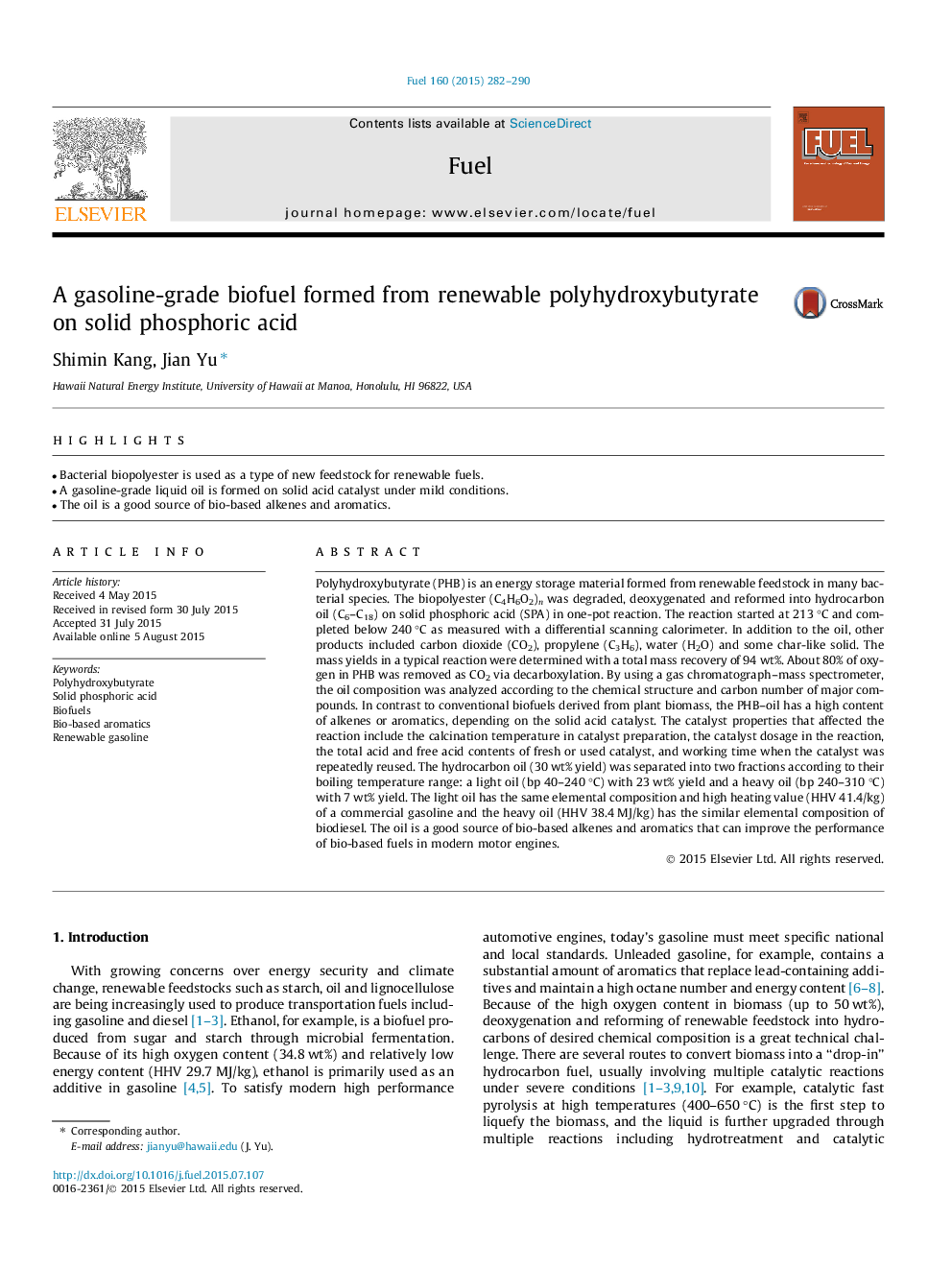| کد مقاله | کد نشریه | سال انتشار | مقاله انگلیسی | نسخه تمام متن |
|---|---|---|---|---|
| 205549 | 461112 | 2015 | 9 صفحه PDF | دانلود رایگان |
• Bacterial biopolyester is used as a type of new feedstock for renewable fuels.
• A gasoline-grade liquid oil is formed on solid acid catalyst under mild conditions.
• The oil is a good source of bio-based alkenes and aromatics.
Polyhydroxybutyrate (PHB) is an energy storage material formed from renewable feedstock in many bacterial species. The biopolyester (C4H6O2)n was degraded, deoxygenated and reformed into hydrocarbon oil (C6–C18) on solid phosphoric acid (SPA) in one-pot reaction. The reaction started at 213 °C and completed below 240 °C as measured with a differential scanning calorimeter. In addition to the oil, other products included carbon dioxide (CO2), propylene (C3H6), water (H2O) and some char-like solid. The mass yields in a typical reaction were determined with a total mass recovery of 94 wt%. About 80% of oxygen in PHB was removed as CO2 via decarboxylation. By using a gas chromatograph–mass spectrometer, the oil composition was analyzed according to the chemical structure and carbon number of major compounds. In contrast to conventional biofuels derived from plant biomass, the PHB–oil has a high content of alkenes or aromatics, depending on the solid acid catalyst. The catalyst properties that affected the reaction include the calcination temperature in catalyst preparation, the catalyst dosage in the reaction, the total acid and free acid contents of fresh or used catalyst, and working time when the catalyst was repeatedly reused. The hydrocarbon oil (30 wt% yield) was separated into two fractions according to their boiling temperature range: a light oil (bp 40–240 °C) with 23 wt% yield and a heavy oil (bp 240–310 °C) with 7 wt% yield. The light oil has the same elemental composition and high heating value (HHV 41.4/kg) of a commercial gasoline and the heavy oil (HHV 38.4 MJ/kg) has the similar elemental composition of biodiesel. The oil is a good source of bio-based alkenes and aromatics that can improve the performance of bio-based fuels in modern motor engines.
Journal: Fuel - Volume 160, 15 November 2015, Pages 282–290
